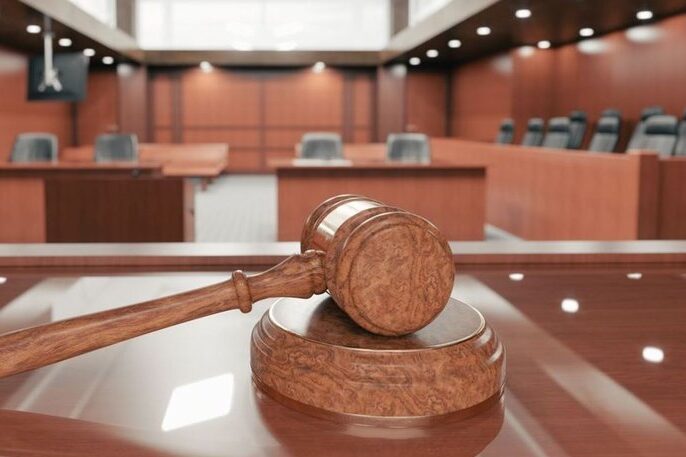Navigating Legal Landscapes: Right of Way Essentials
Navigating the intricate legal landscapes that govern the right of way is essential for both policy-makers and property owners. It hinges on understanding the statutory provisions, case law precedent, and negotiated terms that define how land can be used or accessed by others. By law, a right of way often allows one party to cross or use another’s property for a specified purpose, such as laying down utility lines or constructing a road. Establishing this right frequently involves eminent domain or easement agreements, which must take into account local regulations, the degree of intrusion on the property, and the necessity of the infrastructure project. Public authorities are typically tasked with proving that such intrusions are for the greater public good and that there is a clear and compelling need to override the private property rights, ensuring that the demand for right of way is not only legally sound but justified in its contribution to the public interest.
The conflicting nature of right of way cases often leads to a rigorous judicial process evaluating both the public utility of a proposed project and the rights of private landholders. For landowners, the assurance of just compensation as per the Fifth Amendment in the United States, or comparable legal statutes elsewhere, is paramount. However, the valuation of such compensation can become a contested issue, hinging on market values, potential future use, and the subjective loss of property enjoyment. Governments and developers must align their proposals with eminent domain laws, which are designed to prevent abuse of power. Essentially, whether the right of way is pursued for a high-speed railway, a pipeline, or power transmission lines, the legal system ensures a balancing act that arguably strives to equitably reconcile the needs of modern infrastructure with the sanctity of private property rights.
Reflecting on these precedents, the demand for right of way necessitates a well-informed, collaborative approach that respects the legal parameters while fostering dialogue between stakeholders. Governments and developers should prioritize transparent engagement with affected landowners, presenting clear, tangible benefits that such projects will bring to the community at large. Equally critical is the establishment of fair, expedient resolution procedures for disputes that may arise, ensuring that the legal process does not unduly burden any party. Ultimately, by adhering to the principles of fairness, transparency, and mutual respect, the journey through the legal landscapes of right of way can lead to decisions that support progress and property rights, mitigating conflict and promoting trust in the systems that oversee our shared spaces.
Balancing Interests: The Intricacies of Right of Way Acquisition
The acquisition of right of way represents a pivot upon which the scales of public benefit and private rights oscillate, necessitating a balanced approach that harmonizes community advancements with individual entitlements. As infrastructural projects like highways, pipelines, and transmission lines intersect with private landholdings, the process of acquiring right of way becomes mired in complexity, often requiring sophisticated negotiations and, at times, invoking eminent domain. It is a rigorous legal orchestration that seeks to ensure that while landowners receive fair compensation and retain certain assurances, the society at large also stands to gain from enhanced connectivity and the economic stimulus that typically follows infrastructural development. This delicate equilibrium is not easily achieved, as it must account for diverse factors such as the intrinsic value of the land, the potential for future appreciation , and the personal or cultural significance it may hold for its owners.
Amid this intricate balancing act, the principles of necessity and minimal intrusion guide right of way acquisitions. Governments or entities must demonstrate the necessity of acquiring specific parcels of land for projects deemed beneficial to the broader community. This is weighed against the principle of minimal intrusion, where the least disruptive path is chosen to minimize impact on landowners. The unveiling of transport and utility projects often stirs a mix of emotions, from the anticipation of progress to fears of displacement or environmental degradation. It challenges policymakers to not only prioritize the logistical and economic aspects of right of way but also to actively engage with the affected communities, incorporating their voices and concerns into the decision-making process. In this way, acquisition becomes a collaborative effort, striving to avoid or mitigate the social costs that sometimes accompany compulsory purchase orders while still meeting the logistical demands of critical infrastructure projects.
Inherent to the discourse on right of way acquisition is the enduring need to foster an environment of transparency and trust. It is paramount that the process is undergirded by stringent regulatory oversight and a fair, equitable system of compensation that recognizes not just the market value, but also the subjective impact on landowners’ lives. Measures need to be in place to ensure that those affected are privy to timely and complete information, have access to legal recourse, and are participants in the dialogue well before the gears of development grind forward. This aim to democratize the negotiation process helps in placating dissent and reinforcing the perception of fairness in the public eye, ensuring that right of way acquisitions do not devolve into contentious battles, but rather, represent a collective stride towards societal growth and communal prosperity.
Resolving Disputes: Strategies for Right of Way Enforcement
Resolving disputes over right of way requires a well-structured combination of diplomacy, legal acumen, and sometimes, strategic enforcement. The process often begins with negotiations grounded in mutual respect for both the landowner’s rights and the societal benefits of the proposed project. When parties are unable to reach an agreement voluntarily, mediators can play a pivotal role in facilitating a resolution that acknowledges the landowner’s tenure while making concessions for the greater good. However, when an impasse persists, it is incumbent upon the enforcing authority to invoke eminent domain or compulsory purchase laws judiciously, ensuring that due process is followed and that just compensation is awarded. This balance strives to prevent exacerbating tensions while upholding the principle that no individual’s hold on property should unreasonably impede progress for the community at large.
Enforcement strategies for right of way often necessitate a tiered approach that includes clear communication with stakeholders, transparent estimation of fair market values, and a thorough environmental and social impact assessment. In jurisdictions where agreements prove elusive, policymakers may resort to statutory tools that empower infrastructure development while mandating just compensation for affected landowners. This process, however, must ensure adequate procedural safeguards are in place to protect property rights and should ideally facilitate appeals or arbitration as alternatives to direct expropriation. By doing so, the enforcing bodies demonstrate a commitment to balancing individual rights with public necessity, all the while reinforcing the legal tenets that protect citizens from potential governmental overreach and ensuring that the imposition of right of way serves a legitimately public purpose.
In the ultimate analysis, the efficacy of right of way enforcement hinges on creating an equitable framework that underpins the process with fairness and transparency. At the heart of resolving such disputes lies the need for a robust legal system that not only empowers authorities to implement infrastructure projects but also zealously guards against the arbitrary deprivation of property. Regular legislative reviews to reflect evolving societal values and technology advancements can further refine right of way laws, ensuring they remain fit for purpose in the modern era. Moreover, supplementary mechanisms such as community engagement forums and ombudsman services can provide additional layers of oversight and dispute resolution, facilitating an environment where the movement towards progress and preservation of individual rights are not mutually exclusive but instead progress hand in hand.







